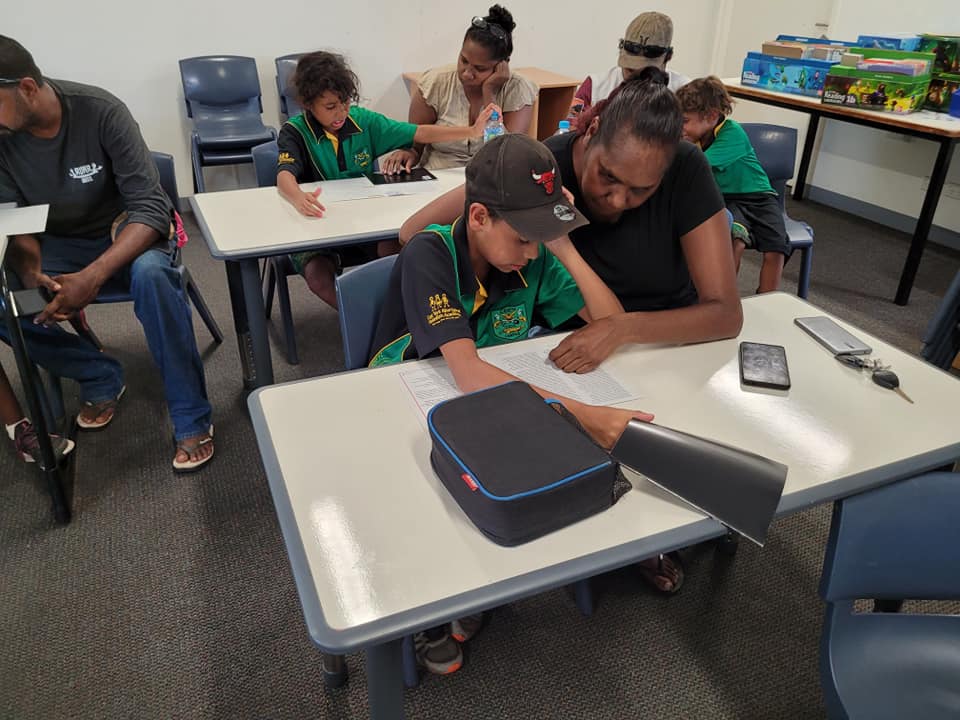Practice Assess School Context
-
Module Introduction2 Topics
-
Delivered With Fidelity16 Topics|2 Tests
-
Cover
-
Module Objective
-
What Happens When Assess School Context is Delivered with Fidelity
-
How to Assess School Context
-
Principal is Proactive
-
The School Team Shares Responsibility for Improvement
-
Principal Hosts Meeting to Assess School Context
-
The School Team Builds a Culture of Collaboration Around Continuous Improvement
-
The Teacher Listens to a Parent and Suggests Tutoring
-
The School Team Engages with the Community
-
Video : Increase Parental Engagement
-
A Parent is Concerned Over the Cost of Instruments
-
The Team Member Contributes to Building a High-Expectations School Culture
-
Principal Meets with Teacher’s Parents
-
Check Your Understanding
-
Test Your Understanding
-
Cover
-
Not Delivered With Fidelity12 Topics|2 Tests
-
Cover
-
What Happens When Assess School Context is not Delivered with Fidelity
-
Responsibility for Improvement is not Shared with the Leadership Team
-
The Teacher does not Share Improvement with Leadership
-
The School Team does not Build a Culture of Collaboration Around Continuous Improvement
-
Principal does not Involve the Community
-
The School Team is not Engaging with the Community
-
A Teacher does not Assess School Context
-
The Team Member does not Contribute to Building a High-Expectations School Culture
-
Teacher does not Reschedule Coaching Session
-
Check Your Understanding
-
Test Your Understanding
-
Cover
-
Barriers That Impede Fidelity10 Topics|2 Tests
-
Cover
-
Barriers That Impede Assessing School Context with Fidelity
-
Using Deductive Logic to Identify the Cause of the Barrier
-
Not Understanding Why Assessing School Context is Required
-
Not Knowing How to Assess School Context
-
Staff Absences or Shortages
-
External Interruptions
-
Inability to Connect with Community
-
Check Your Understanding
-
Test Your Understanding
-
Cover
-
Removing Barriers That Impede Fidelity15 Topics|2 Tests
-
Cover
-
Ways to Tackle Barriers so Assessing School Context is Delivered with Fidelity
-
Understand Why Assessing School Context is Required
-
Process
-
How to Assess School Context
-
Process
-
Manage Staff Absences or Shortages
-
Process
-
Avoiding External Interruptions
-
Process
-
Connect with the Community
-
Process
-
Video: Partnership with Parents
-
Check Your Understanding
-
Test Your Understanding
-
Cover
-
Module Completion Survey1 Topic
Participants 11

Principal Meets with Teacher’s Parents
Principal, Andrew, needs to understand the student population before he begins drafting the School Improvement Plan. Teacher, Amelia, is the last class of parents he needs to meet with. He will have them fill out a questionnaire and open the discussion of student learning at home and in school.

Amelia hosts a family reading night in the classroom. It gives parents the opportunity to read with their children and converse with the teacher and principal. The teacher hands out a home–school survey for the parents to fill out. As the parents are filling out the form, Andrew facilitates discussion with parents based on their answers. Some parents choose not to share, but others are happy to discuss obstacles they may have. The biggest obstacle is that most parents said they do not know what the child is learning in the classroom and when they ask their child they reply with “I don’t know.”
Andrew, Amelia and the parents discuss ways they can get to know what their children are learning. Amelia suggests creating an e-letter that shares what they will be working on through the week, but some parents said they do not have an email. A newsletter that is printed every week with school events, what the child is learning in every subject and questions that parents can ask was the agreed upon method.
Over the next two weeks Amelia has sent home the weekly newsletter to parents. It has been printed on bright coloured paper to stand out. When a parent saw Amelia after school, they thanked her because it was easily identifiable within the other papers and they can ask their children specific questions about their learning. The parent even said she helped her child when she did not understand the difference between a linking verb and helping verb.

